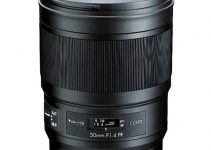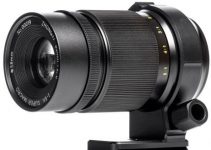This year, 2018, has brought a slew of new technologies from computer manufactures aimed at increasing performance for a wide variety of system-intensive tasks including video editing. With all the components that go into building an editing rig, you may find it a bit intimidating when it comes to picking the right parts for your editing PC.
Fortunately, Jordy Vanedput and the team at Cinecom.net have created a quick video guide that outlines exactly what to look for in your editing machine. Of course, what brands you choose and what parts you pick will depend on your specific editing workflow. Nevertheless, consider the advice given in the video and this article as a means to understand what hardware components will be required to run your PC optimally based on the NLE you tend to use.
First and foremost, here’s the full list of the components used for the custom build PC showcased in the video above:
- Motherboard: MSI – X299 SLI Plus ATX LGA2066 (B&H, Amazon)
- CPU: Intel Core i9-7900X X-Series 3.3 GHz Ten-Core LGA 2066 (B&H, Amazon)
- Memory: HyperX Predator DDR4 – 3200Mhz 4x8GB (Amazon)
- Graphics Card: MSI GTX 1080 GAMING X 8GB (B&H, Amazon)
- SSD: Intel 600P – 265GB M.2 SSD (Amazon)
- Hard Drive: Seagate 10TB BarraCuda Pro 7200 rpm SATA III (B&H, Amazon)
- CPU Cooling: Cooler Master MasterLiquid 240 AIO Liquid (B&H, Amazon)
- Case: Cooler Master H500P (Amazon)
- Power Supply: Cooler Master V750 750W 80 Plus Gold (B&H, Amazon)
As a video editor, the most important component of your custom workstation you need to pay close attention to in the first place is the CPU. As a rule, video editing tasks are very processor-focused in terms of carrying out editing operations, especially in programs such as Adobe Premiere Pro, Sony Vegas, and Avid Media Composer.
When buying a processor, generally it doesn’t matter if you’re waving the blue (Intel) or Red (AMD) flag. Instead, pay attention to the number of cores the processor has. With more processing units, your editing program will be able to perform multiple calculations and operations in a given time. In fact, because of this concept, video editing is a particular computational scenario wherein core count holds a higher priority than per core clock speeds. The Intel i9 7900X is an excellent example in that regard.
Since 4K video editing workflows have become increasingly more mainstream, it’s recommended that you have a system with a minimum of six cores. Of course, the more threads you can obtain the better, although you will have to account for significant jumps in price. As for those still working primarily with 1080p footage, having at least a quad-core CPU is paramount to having a workable editing experience.
You should also keep in mind that the more cores your CPU has, the more heat will be dissipated. So, to keep your CPU and maximum efficiency, make sure to invest in a proper cooling solution as well. While air-cooled (fan based) PSUs are commonplace, using a liquid-based cooling system will keep your rig cooler than using an air-cooled alternative.
In fact, liquid cooling allows you to extend the performance of the CPU by enabling you to overclock since such a cooler can keep the CPU away from dangerous temperatures. Cooler Master and Corsair are two major companies that come to mind in the realm of computer cooling solutions.
Besides choosing an appropriate CPU cooler, picking the right case for your build is just as important. Of course, try to base your suggestion beyond the overall appearance of your machine.
Not only should you ensure that your workstation chassis has enough space for cable management and computer components, but make sure that it has ample space for air to flow freely to avoid overheating. NZXT, Cooler Master, and Corsair happen to be at the forefront of computer cases.
Needless to say, the graphics card (GPU) is pivotal when it comes to increasing the performance of your editing rig. As the name implies, the graphics card’s job is to process the graphical operations in your computer. Over the years, platforms such as Premiere Pro and DaVinci Resolve were designed in a way to leverage GPU-acceleration capabilities, allowing you to add and view effects through real-time timeline playback.
If you want to look for the best graphics card in your system, pay attention to the number of cores the GPU has, rather than the amount of available VRAM. For NVIDIA, the cores are known as “Cuda Cores” while AMD calls their cores “Stream Processors.” While the terminology may seem confusing to some, it can be used as a basis to determine how many different calculations can be done in a given time. The general rule of thumb is that the more cores a GPU has, the more it can do at once.
Random Access Memory (RAM) is the primary storage in a system wherein instructions and data are loaded for rapid read and write operations. As you perform tasks in your editing software, different instructions and data sets are constantly being stored and recalled. That being said, picking the right amount of memory for your system is crucial. The more memory your system has (i.e., 16 GB and above), the more data that can be stored as you edit.
Besides merely considering the amount of memory you have, you also need to take into account the speed. These are usually given in the unit Megahertz (MHz). The higher the memory’s clock speed, the faster the rest of computer can access the component, therefore leading to an overall more efficient editing rig.
The last major component to consider when it comes to your editing rig is the storage. For most editing rigs seen in recent years, the most common storage configuration is some type of SSD and HDD combination. Apparently, SSD technology has drastically improved over time with the development of technologies such as M.2 NVMe SSDs.
For you editing rig, consider getting an M.2 NVMe SSD with a capacity of around 256GB or above. The reason behind this seemingly low capacity is due to the high price tag currently associated with this particular type of memory. With limited drive space, it’s best that you install your operating system and frequently-used programs on the SSD. Companies like Samsung, Corsair, and Kingston have a reputation for having some of the best SSDs currently in the market.
For the storage of less frequently-used files, raw footage, or archival data, it’s ok to have a conventional spinning drive. Even though these are considerably slower than SSDs, HDDs are cheaper yet and do come in high capacities of up to 10TB (at least in the consumer/prosumer space). Brands such as Western Digital and Seagate are well-known by many as two of the most reliable HDD manufacturers.
All in all, building an editing rig is not the simplest and most straightforward process by any means. So, before you go out and assemble your custom workstation, it’s important to understand the priorities involved when picking computer components for professional video editing. In this creative process, the goal is to be able to perform as many operations as possible all at the same time, therefore requiring more cores over higher speeds, even though higher speeds are still preferable if that can be attained.
[source: Cinecom.net]
Disclaimer: As an Amazon Associate partner and participant in B&H and Adorama Affiliate programmes, we earn a small comission from each purchase made through the affiliate links listed above at no additional cost to you.




